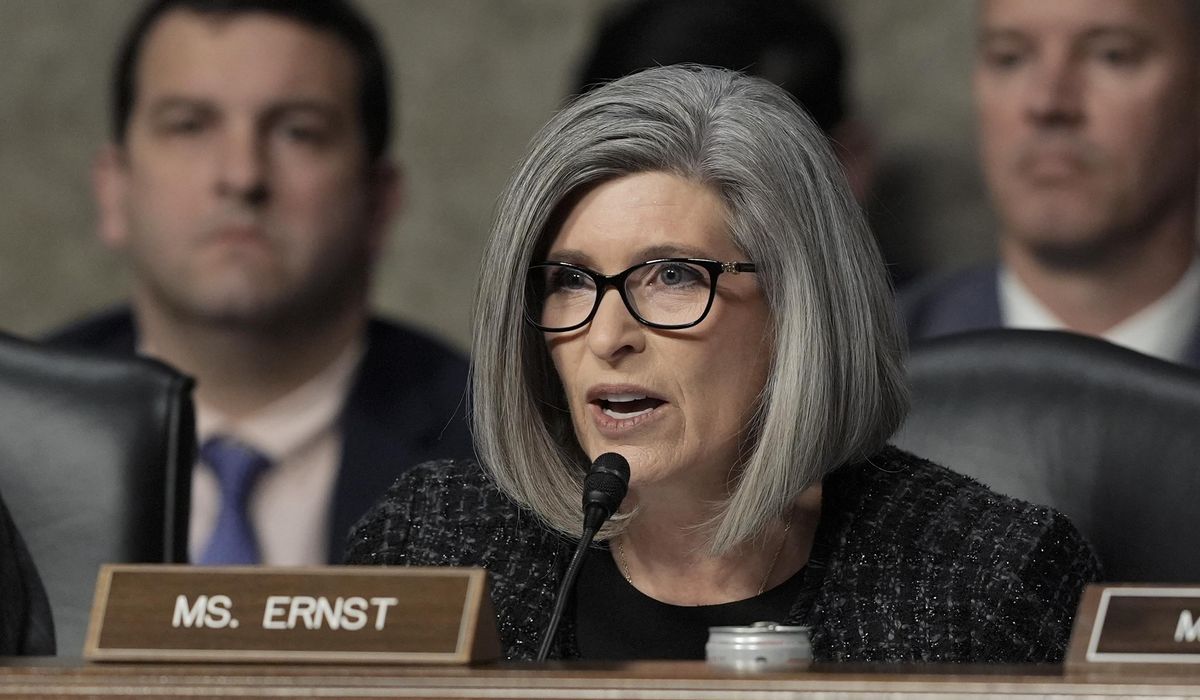


One federal Interior Department employee who is supposed to be working in the D.C. area actually lives in sunny southern California and rarely, if ever, makes it to Washington.
Two others live in Oregon. Three live in Colorado. Still others are spread across the Southeast and Midwest.
And each of them may be bilking the government of extra pay by claiming enhanced D.C.-area wages while, in reality, they live in cheaper regions, the department’s inspector general warned in a memo prodding officials to finish up reviews of dozens of cases where teleworking employees may be claiming too much pay.
The warning came in a memo to department officials just before Christmas. It was provided this week to Sen. Joni Ernst, Iowa Republican, who said it was a wake-up call for no-show workers.
“Department of Interior employees rarely see the interior of their office,” she said. “Just 14% of Interior’s headquarters is being used while D.C. employees living elsewhere are overpaid more than $400,000. I am giving bureaucrats a simple choice — get back to work or be fired.”
Federal telework policies are increasingly under scrutiny as workers who fled offices during the pandemic are refusing to return, and the Biden administration has been unable — or unwilling — to prod them. Congressional Republicans have called on President-elect Donald Trump to get tough on the holdouts.
A new report Wednesday by the House Oversight and Accountability Committee said remote work has consumed the federal bureaucracy, with 10% of the workforce — some 228,000 employees — never having to show up at an office.
Another 1.1 million employees are designated as eligible for some telework, and nearly all of them take advantage of it. They average two days a week working from somewhere other than their official worksites, committee investigators said.
Nearly a third of Health and Human Services employees are full-time remote workers. Meanwhile, 55% of the Education Department never has to set foot in the office, according to the report — and those that telework still end up spending more than half their time out of the office.
To make matters worse, Biden administration officials have tried to obfuscate the extent of things, challenging the data and telling lawmakers their employees “show up every day.”
The result is agency buildings that resemble ghost towns. House Oversight and Reform investigators photographed the 6,300-employee Social Security building’s parking lot completely empty at 11 a.m. on a Wednesday workday.
“The lights may be on in federal buildings, but too many federal bureaucrats continue to work from home,” said Rep. James Comer, Kentucky Republican and chairman of the committee.
He said the government’s whole approach to telework is wrong in that it’s largely based on what the employees want, rather than on the government’s mission — or taxpayers’ best interest.
In most cases, agencies haven’t even tried to measure whether telework advances their mission.
The committee said it knew of only one agency, the Veterans Benefits Administration, that includes a “meaningful” measure of the effectiveness of teleworking employees.
When challenged, federal managers say they have to be generous with telework to compete with the private sector.
IRS Commissioner Danny Werfel, who led a massive hiring spree at the tax agency, told Congress last year that telework was a crucial benefit to offer.
“We have to stay competitive in the labor market and we want to make sure that we’re providing good flexibility versus what other employers might provide,” he said.
During a committee hearing called to probe telework policies, Democrats generally defended the practice while Republicans were more skeptical.
They complained that the Biden administration has locked in deals with labor unions that will make it difficult for the next president to get more people back into office.
Social Security, for example, reached a deal with its labor union in November to lock in generous telework policies that allow employees to be in the office as little as two days a week.
That agreement lasts beyond the next Trump administration.
Former Social Security Commissioner Martin O’Malley defended the deal to lawmakers, saying they are getting good results from teleworking employees and saying his agency is more productive despite seeing a cut in staff levels.
At the Interior Department, the issue goes beyond productivity.
The inspector general last year identified 48 employees who claimed enhanced D.C.-area pay but were actually located somewhere else. Of those, 40 didn’t report to their D.C. worksites at least twice per pay period, as required by the rules.
Department officials said more than three dozen of those cases were suspicious enough to demand investigations. Reviews were completed for eight employees who were either ousted or had their agreements reworked.
But 29 cases were still undecided as of late last month.
The Interior Department didn’t respond to a request for comment.
Rep. Marjorie Taylor Greene, Georgia Republican, warned employees Wednesday that lenient treatment is about to come to an end.
“President Trump was elected to put the federal bureaucracy in its place, and that includes back in the office,” she said.
And Russell Vought, Mr. Trump’s pick for budget director, told senators on Wednesday that the incoming president’s commission, the Department of Government Efficiency or DOGE, will be in charge of getting bodies back in chairs.
“This is a major area that they’re looking at,” he said.
• Lindsey McPherson contributed to this article.
• Stephen Dinan can be reached at sdinan@washingtontimes.com.
